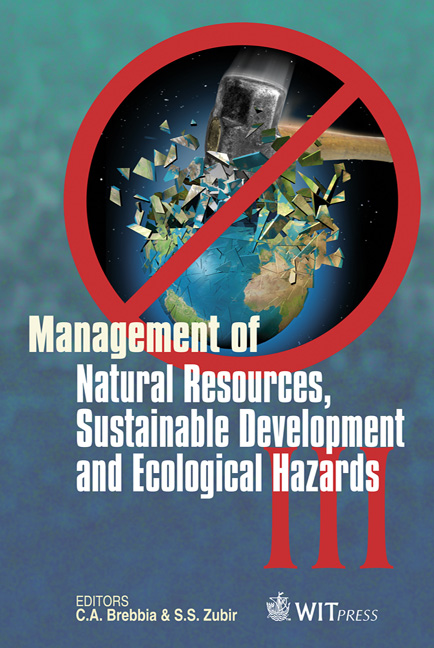Environmental Friendly Concrete Production Using Municipal Solid Waste Incineration Materials
Price
Free (open access)
Transaction
Volume
148
Pages
10
Page Range
325 - 334
Published
2011
Size
548 kb
Paper DOI
10.2495/RAV110301
Copyright
WIT Press
Author(s)
Z. Pavlík, M. Keppert, M. Pavlíková, P. Volfová & R. Černý
Abstract
The building industry, especially construction materials’ production, is a major user of the world’s resources and together with energy production one of the most important sources of the CO2 production. Among building materials, concrete is element which is the second most consumed substance in the world, whereas only water is used in greater quantities. Apparently, almost one ton of concrete is used for each person in the world each year. From the point of view of ecological and sustainable aspects, concrete industry is now recognized as the largest consumer of natural resources and significant producer of waste. In order to preserve clean environment, there is a need for improvement of existing production technologies of concrete by transforming them into sustainable and environmentally friendly. Municipal solid waste incineration (MSWI) materials as fly ashes and bottom ashes have not dissimilar average chemical composition from that of coal fly ashes and slag from iron production. On that account one can assume possible use of MSWI materials as partial Portland cement replacement in concrete mix design or in a raw state as partial aggregate replacement. Since waste treatment represents serious problem for advanced as well as for developing countries, the use of MSWI materials in concrete production is beneficial for both ecological and financial reasons. Three kinds of MSWI fly ashes in state \“as received” were characterized and their potential use as filler in cement based mortars was tested. The motivation of this utilization was to replace part of the fine aggregate dose in the mortars. All tested ashes made the mortars properties worse; the reasons and possible solutions are discussed. Keywords: municipal solid waste incineration, fly ash, cement mortar, aggregate replacement, porosity, strength, durability.
Keywords
municipal solid waste incineration, fly ash, cement mortar, aggregate replacement, porosity, strength, durability





